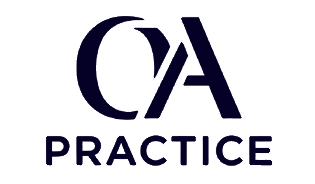D220 Information Technology in Nursing Practice - Set 1 - Part 1
Test your knowledge of technical writing concepts with these practice questions. Each question includes detailed explanations to help you understand the correct answers.
Question 1: A nurse discovers that provider orders are missing from a post-operative cardiac patient's chart and needs to locate them immediately to plan care effectively. Which component of the electronic health record would be the primary source for finding these essential care directives?
Question 2: A diabetic patient experiences significant blood glucose fluctuations requiring careful monitoring and documentation by nursing staff. Which two electronic health record components should nurses utilize together to comprehensively track and manage this patient's glycemic status throughout their hospitalization?
Question 3: During implementation of a new electronic health record system, nurses report feeling overwhelmed by numerous data entry fields. Which documentation method would most effectively reduce this burden while maintaining accurate patient information capture?
Question 4: A patient transfers from a hospital using Epic electronic health records to another facility utilizing a different system called AMR. Which mechanism enables the receiving facility to access the patient's critical health information despite the incompatible systems?
Question 5: The Health Insurance Portability and Accountability Act establishes national standards for protecting patient health information. What specific type of information does HIPAA define as requiring the highest level of protection in healthcare settings?
Question 6: A family member arrives at the hospital requesting copies of their relative's medical records for insurance purposes. According to HIPAA protocols, which department should the nurse direct them to for proper authorization and release of this information?
Question 7: Healthcare facilities implement barcode medication administration systems to improve patient safety during medication delivery. Which government agency specifically recommends the use of BCMA technology to reduce medication errors in healthcare settings?
Question 8: An informatics nurse notices that clinical staff consistently ignore decision support alerts in the electronic health record system. What is the primary concern that results when healthcare workers experience too many system warnings?
Question 9: A surgical unit implements radio frequency identification technology in patient identification labels. This specialized clinical information system primarily serves which purpose in the operating room environment to enhance patient safety and workflow efficiency?
Question 10: The American Recovery and Reinvestment Act of two thousand nine established incentive payments for healthcare providers. What specific requirement must hospitals and professionals meet to receive these financial incentives from Medicare and Medicaid programs?
Question 11: During a quality improvement initiative, a hospital needs to compare its stroke care metrics with similar facilities nationwide. Which analytical method would best help identify performance gaps and opportunities for improvement against industry standards?
Question 12: A nurse informaticist needs to analyze a serious medication error that resulted in patient harm. Which structured analytical tool would most effectively identify the root causes of this adverse event to prevent future occurrences?
Question 13: Healthcare organizations must ensure that electronic protected health information remains secure on mobile devices used by staff. Which security measure provides the strongest protection if a device containing patient data is lost or stolen?
Question 14: The HITECH Act of two thousand nine strengthened healthcare information security requirements beyond original HIPAA standards. What key requirement did HITECH add to protect patients when their electronic health information is compromised?
Question 15: An emergency department implements a new clinical decision support system to improve patient care. What is the primary intent of CDS technology when integrated into electronic health records for clinical practice?
Question 16: A hospital's informatics team conducts workflow analysis before implementing a new electronic health record system. What is the primary purpose of analyzing clinical workflows during the system development life cycle planning phase?
Question 17: During electronic health record implementation, staff members resist using the new system and express preference for previous methods. Which change management strategy would most effectively address this resistance and promote successful adoption?
Question 18: The Centers for Medicare and Medicaid Services developed specific criteria for meaningful use of electronic health records. Which aspect represents a core requirement that healthcare providers must demonstrate to qualify for incentive payments?
Question 19: A patient arrives at an emergency department where the facility uses a different electronic health record system than their primary care provider. Which health information exchange method would best serve this unplanned care situation?
Question 20: Healthcare facilities generate massive datasets beyond human capability to analyze manually. Which technology specifically helps identify hidden patterns and relationships within these large data repositories to improve patient outcomes?
Need Guaranteed Results?
Our exam support service guarantees you'll pass your OA on the first attempt. Pay only after you pass!
Get Exam Support